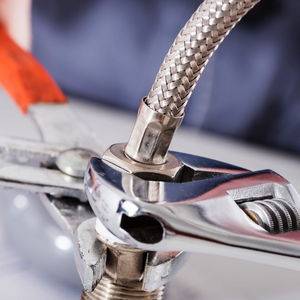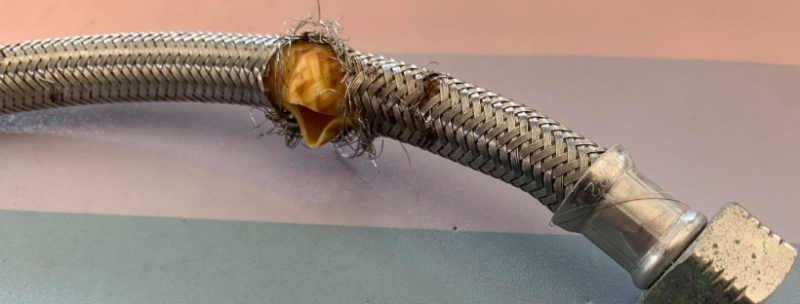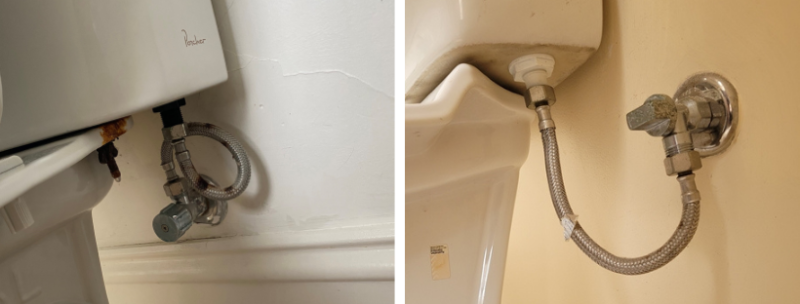What You Must Know About Flexi Hoses

Those humble looking flexible rubber or stainless-steel braided pipes that are lurking underneath your bathroom and kitchen sinks, aren’t in fact humble. Did you know that they are responsible for quite a large portion of water damage and insurance claims? We don’t want this to happen to you and your property, so please keep reading!
 A damaged flexi hose.
A damaged flexi hose.
When it comes to flexible braided pipes (or simply, ‘flexi hoses’), it is always important that you get these checked regularly to avoid hefty expenses from unexpected water damage. Since flexi hoses are often hidden away and not known about, they can be the ticking time bomb you don’t see coming.
Where would you typically find flexi hoses?
- Kitchen sinks
- Bathroom basins
- Toilets
- Dishwashers
- Washing machines
 Where you would commonly find a flexi hose. L to R: kitchen sinks, bathroom (basins & toilets), dishwashers, washing machines
Where you would commonly find a flexi hose. L to R: kitchen sinks, bathroom (basins & toilets), dishwashers, washing machines
When and why flexi hoses can burst?
You may have heard stories about people coming home or waking up to realise that their house has been flooded and their walls, cupboards, appliances, and furniture is water damaged.
This is often caused by a burst flexi hose. Like most things, flexi hoses come with an expiry date, usually around five to ten years after installation. Over time water pressure and other factors can lead to weakness in the hose.
Unfortunately, there’s a high chance of a burst occurring while nobody is at home, or while you are asleep. The water pressure in the pipes may build up when no one has opened a tap or flushed a toilet for some time.
 L to R: Flexi hoses connected to a toilet and a kitchen sink.
L to R: Flexi hoses connected to a toilet and a kitchen sink.
Other factors that can trigger a burst in a flexi hose
- Rusting spots around the hose
- Stretched, sharp bends or twisted hoses
- Issues with installation
- Quality of the materials
- Household cleaning products stored near the hoses
- Unusually high water pressure
 Twisted and rusted flexi hoses.
Twisted and rusted flexi hoses.
How to avoid a burst
Look after your flexi hoses by taking note of any changes in the hose’s colour or shape, and by having each flexi hose checked by a professional plumber biannually.
A consultation from a plumber could save you waking up or coming home to a flooded and damaged house, and can save you thousands of dollars in repairs.
Additionally, read what one insurer had to say about flexi hoses.
Learn more about flexi hose bursts:
Flexi hoses are responsible for more than 20% of water damage claims - The Sydney Morning Herald
The common household pipe that could cost you thousands in damages - RACQ

